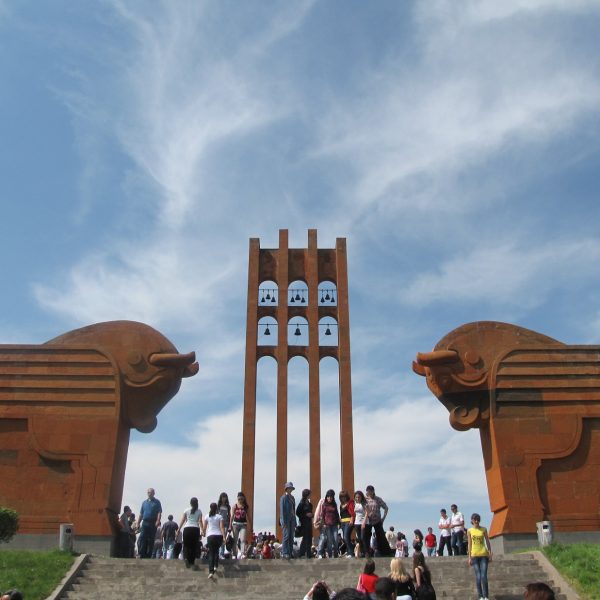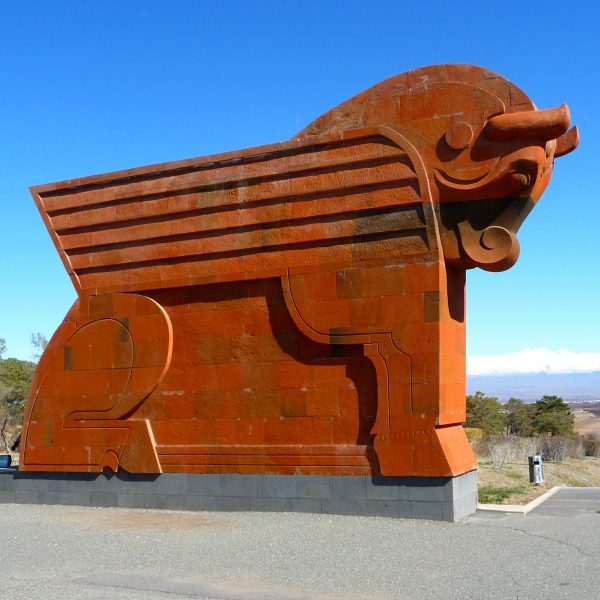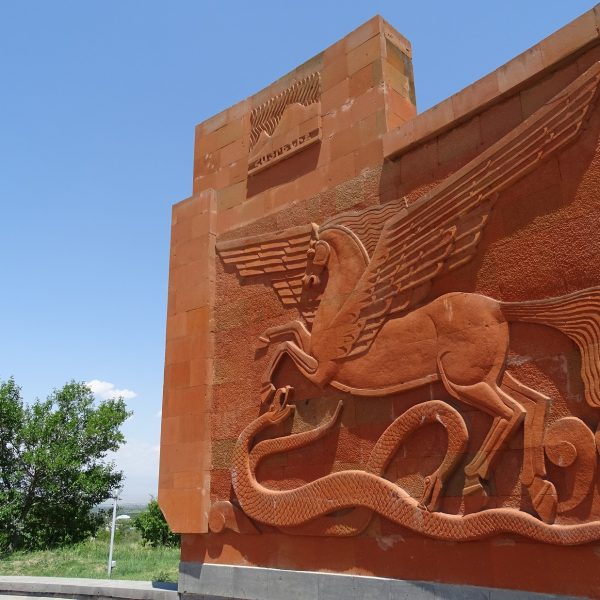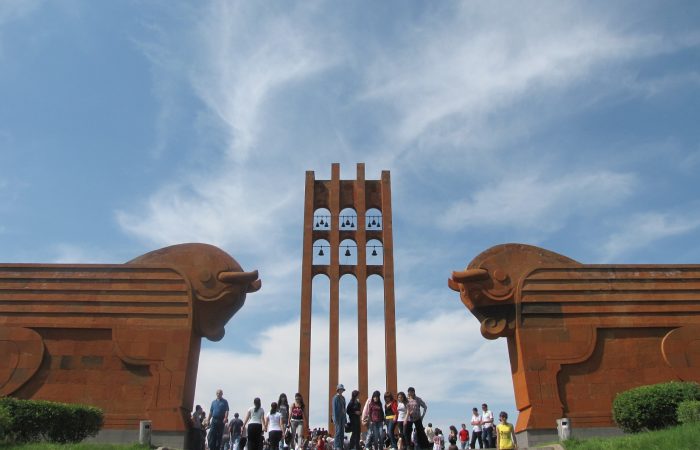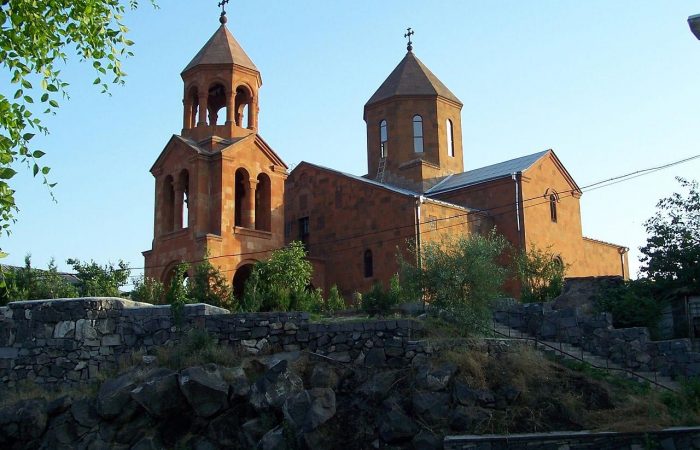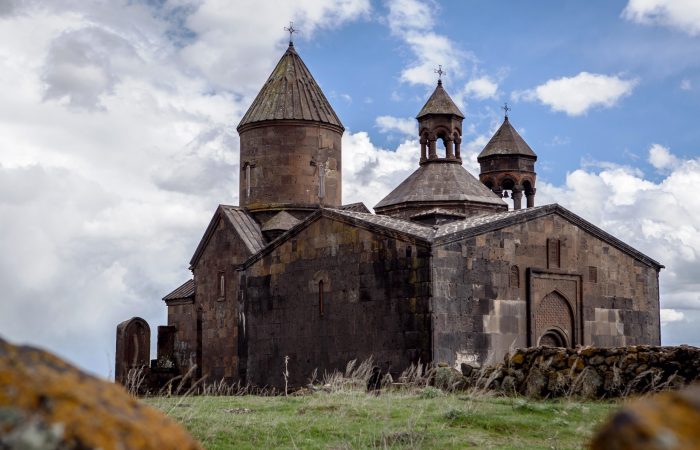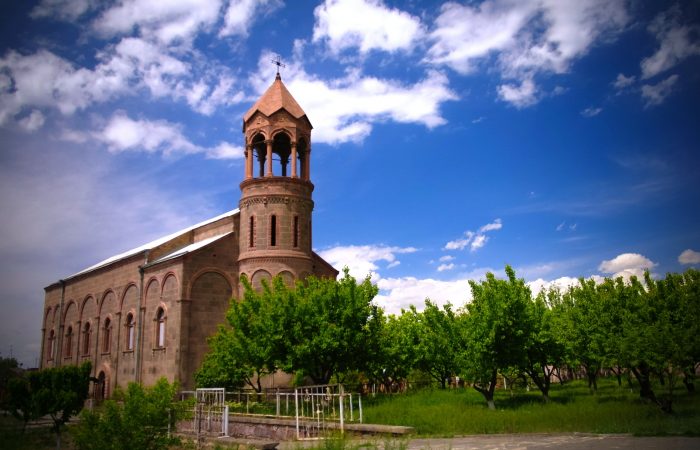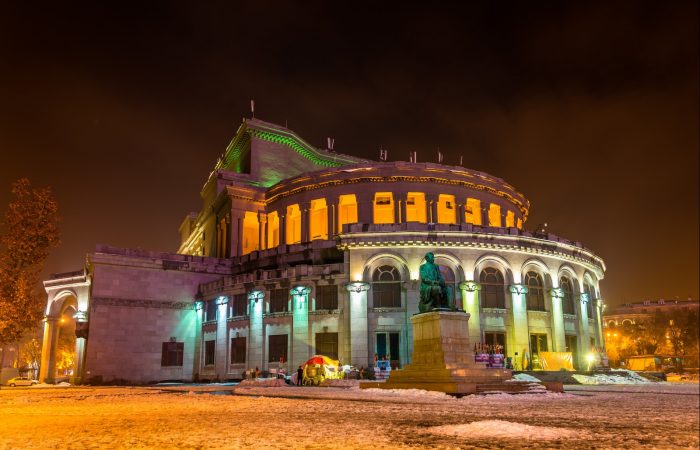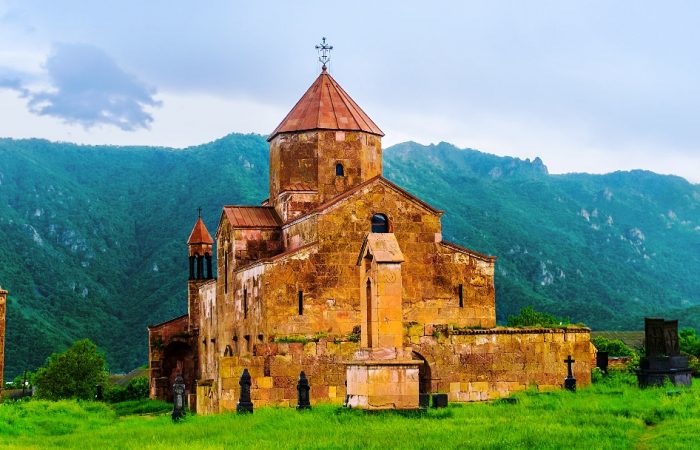About the Complex
Sardarapat Memorial was opened in 1968 in regard to the 50th anniversary of Sardarapat Battle. It was constructed in the place where the battle took place. The entire complex is made if red tuff stone.
In the center of the complex there is the 25 meter high belfry. Three rows of bells are hung in it. Those bells seem to be ready to ring and alert whenever there is some danger. Today they ring to remind everyone of the resounding victory. “These nine bells today also announce of the victory, and if necessary they will ring again,” Israelyan noted.
On the left and right to the belfry there are two winged bulls. Those huge creatures symbolize strength, firmness and loyalty. According to architect Raphael Israelyan they guard the rest area of the heroes.
The square of the belfry is from where the alley of the eagles starts. Those eagles embody the heroes of the battle. As you pass the eagle alley, you come across the “Victory” wall on which scenes from the battle are parabolically depicted.
In 1970 “Vardavar” refectory was constructed. It features solutions typical of medieval Armenian architecture. The building of the refectory includes ethnographic elements.
The Museum
The museum of Sardarapat Memorial is located not far from the refectory. It is a must visit for anyone interested in not only the modern history of Armenian people, but also for those who are eager to see numerous interesting samples dating to the ancient period.
The building of the museum is built as a fortress and includes two narrow windows, out of which one is pointed to Mount Ararat, and the other to Mount Aragats.
The Battle
The Battle of Sardarapat took place in 1918 on May 21-29 between Armenian regular military units and the Turkish troops. On May 21, 1918 the Turkish forces entered Ararat Plain and captured the station and the village of Sardarapat. Afterward, they captured the village of Gechrlu and approached Ghamshla. Upon the order of General Movses Silikyan an attack was launched against the Turkish troops, which smashed their resistance and caused them to flee.
On May 25 colonel Poghos bek Pirumyan made an attempt to throw out the enemy from the captured positions. This attempt did not prove successful. But this did not drive Armenian fighters into desperation. On May 27 the enemy was again struck. Within the period of May 22-26 Turks already had 3500 casualties. Having suffered great losses the Turks fled to Aleksandrapol. The battle eventually ended with the glorious victory of Armenians, which was achieved due to Generals Tovmas Nazarbekyan and Movses Silikyan, Colonels Daniel bek Pirumyan, Poghos bek Pirumyan, Alex Shneur and others. Soviet Union Marshal Hovhannes Baghramyan who also partook in the battle later highly valued general Silikyan’s military skills and techniques.
The Essence of Sardarapat Battle – Due to the victory achieved in the Battle of Sardarapat Eastern Armenia was not captured by the Turks. Also, it considerably held up the advance of the Turkish troops to Baku. In other words, it’s owing to this victory that Armenians were not annihilated.
To sum up, no matter how much you are interested in the history of the Armenian people and its development, this memorial will amaze you with its solutions as every single statue and carving stands for some reason, and when there is reason there is also a meaning to be discovered. This memorial is worth to be visited and seen upon a visit to Armenia.

